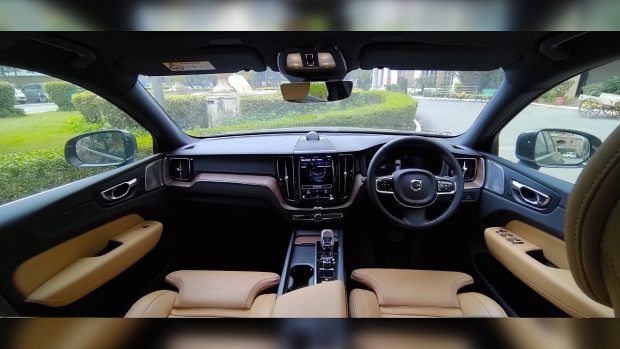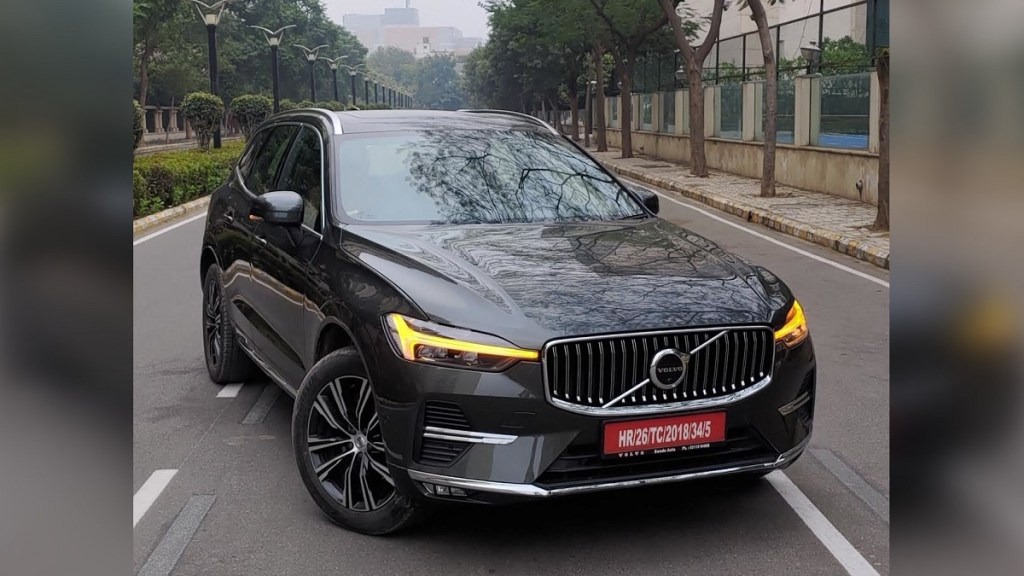Scenario 1: If your car accidentally drifts out of its lane, the steering wheel sends a signal to alert you. If you don’t react, a technology called Lane Keeping Aid gently steers it back into its lane.
Scenario 2: If your car detects you’re about to leave the road unintentionally, it can provide steering inputs and brake support to help guide you back on track. The tech is called Run-off Road Mitigation.
Scenario 3: If there are other vehicles, pedestrians or cyclists ahead of your car and you don’t slow down, a tech called City Safety will warn you, and even apply brakes automatically.
Welcome to the future of driving.
The new Volvo XC60 gets these and many other semi-autonomous driving technologies. We drive this luxury SUV in and around Delhi.

What is the XC60?
It is Volvo’s midsize SUV, and has been around for a while. Recently, Volvo gave it a mild-hybrid update (it saves fuel and reduces tailpipe emissions by recovering energy from the brakes and storing it in a 48V battery). The result is more refined acceleration and better fuel efficiency. It competes against Audi Q5, Mercedes-Benz GLC and BMW X3, among other luxury SUVs.
It is powered by a 1969cc petrol engine (peak power of 250bhp, torque of 350Nm). While Volvo didn’t share the fuel efficiency figures with us, driving in Delhi traffic we got about 16 km/litre. Its top speed is electronically limited to 180 km/h, which is now a global safety norm for all Volvo cars.
How is the cabin?
At 4.69 metres in length, the XC60 is quite a big SUV, and a wheelbase of 2.86 metres means it has good cabin space. Legroom for all passengers is generous.

In terms of luxury features, it scores five-stars—chrome, leather, plastic, cloth … everything inside the cabin not only looks good, but also feels robust. It has an iPad-like touchscreen, and there aren’t any ‘button’ controls for stuff like AC/climate control. The screen is responsive, and it doesn’t have a ‘glare’.
How does it drive?
The cabin is ‘extra quiet’ and vibration-free, and the engine’s power delivery is very good, especially in terms of outright acceleration. The suspension ensures minimal vibrations enter the cabin, but only on good, well-paved roads—on bad roads that we still find in India (even in major cities like Delhi) you may find the ride turning a bit harsh. There are a lot of semi-autonomous driving features (the most prominent of which is automatic braking), but these taking some getting used to. Overall, behind the wheel, the XC60 is a nice place to be in, but slightly more so in the rear seat.
How good a buy is it?
Priced Rs 63.5 lakh onwards, the XC60 is a bit expensive (it’s more expensive than Mercedes-Benz GLC, BMW X3 and Audi Q5). What may make a buyer rethink is that the S60 (slightly less powerful engine, but almost similar cabin feel and definitely one that stands out a bit more on the road) is priced just Rs 45.9 lakh. So, you need to have a solid reason to consider the XC60 when a sibling appears such an appealing buy.


